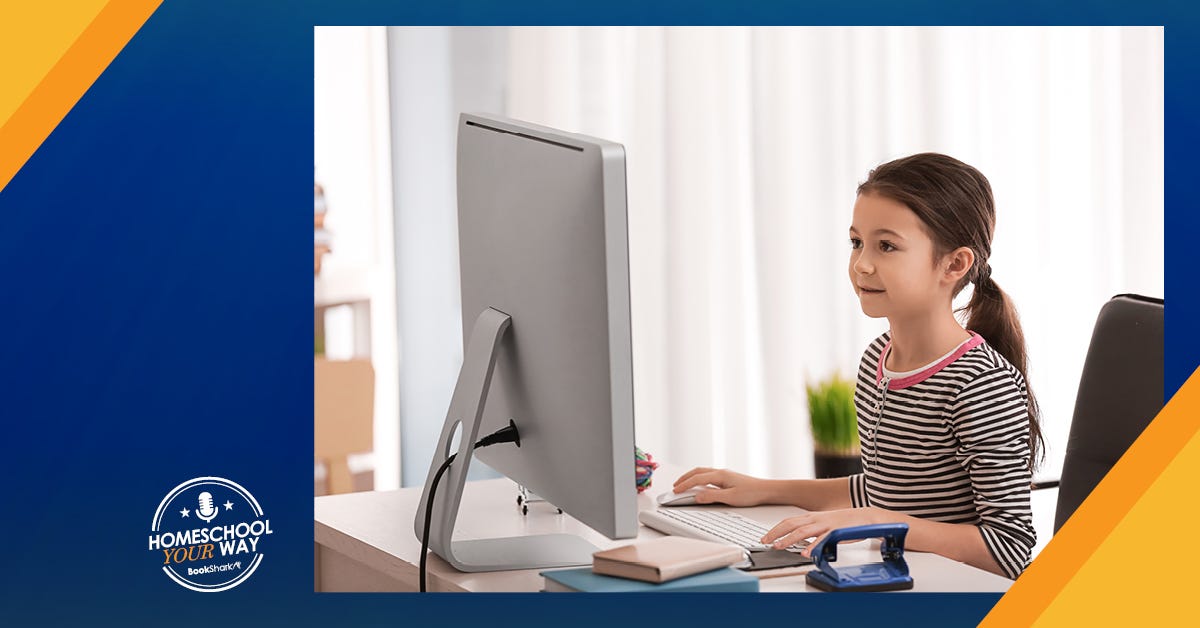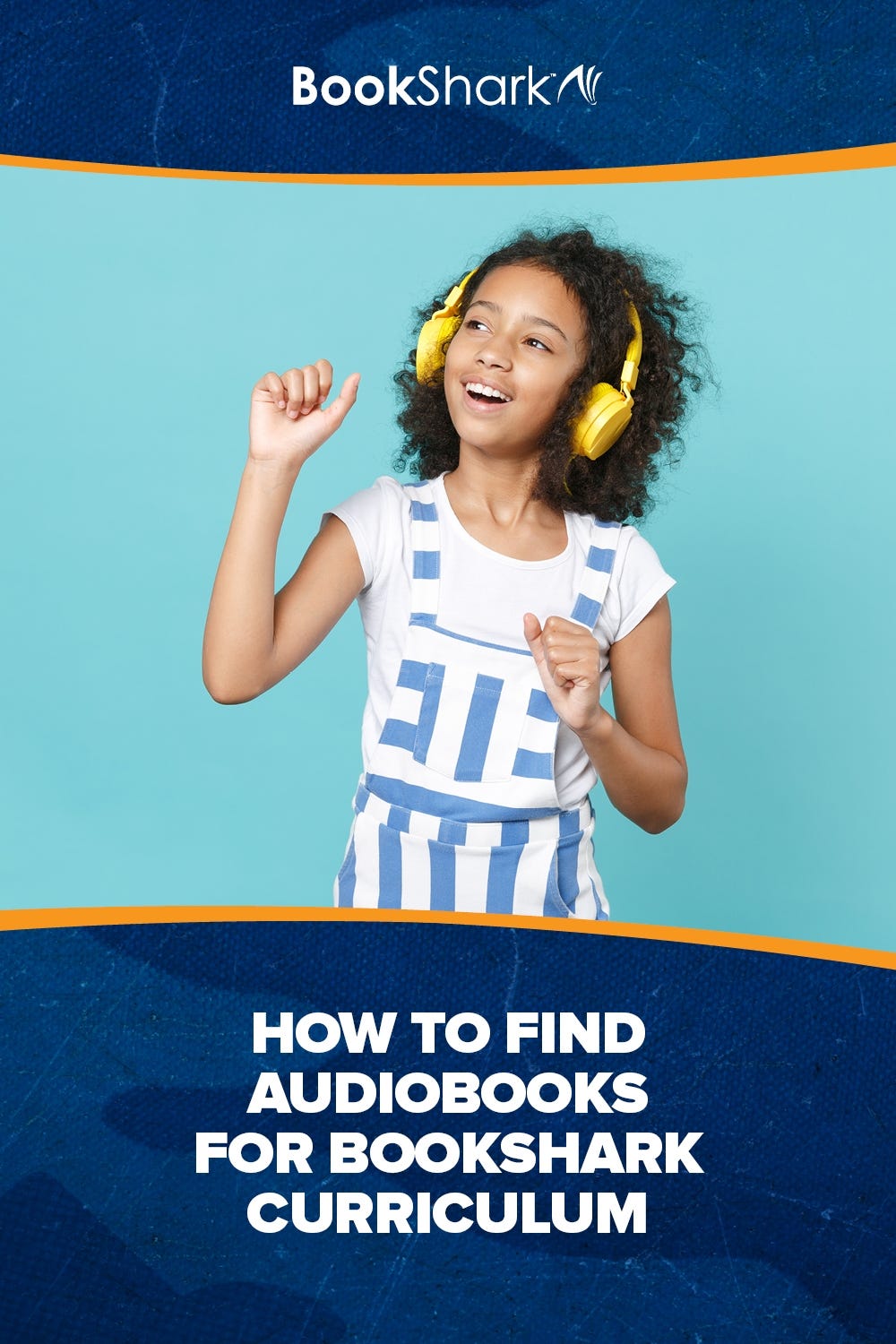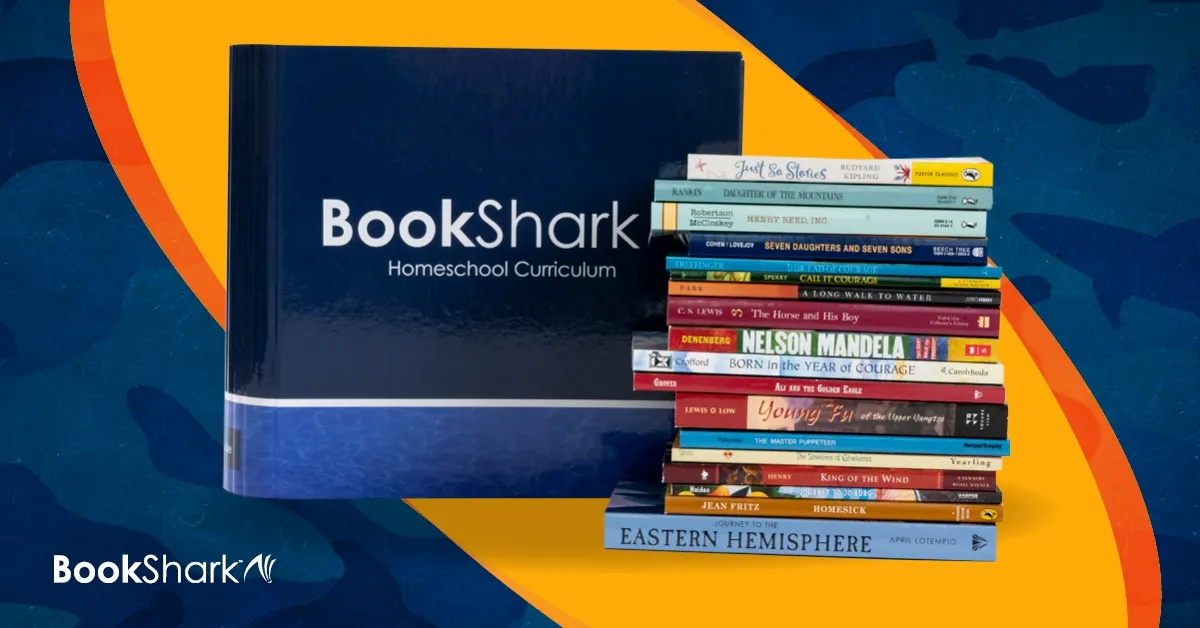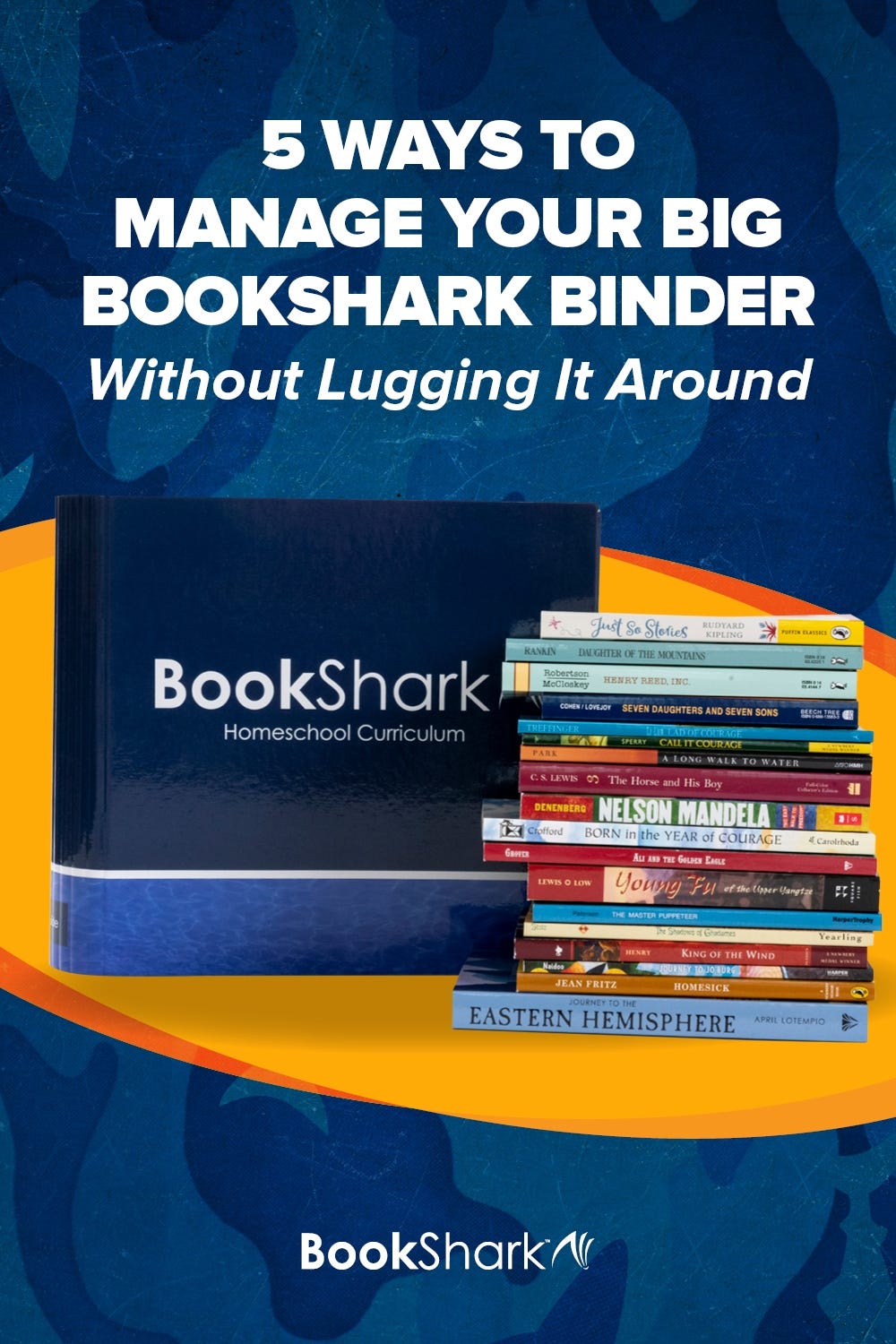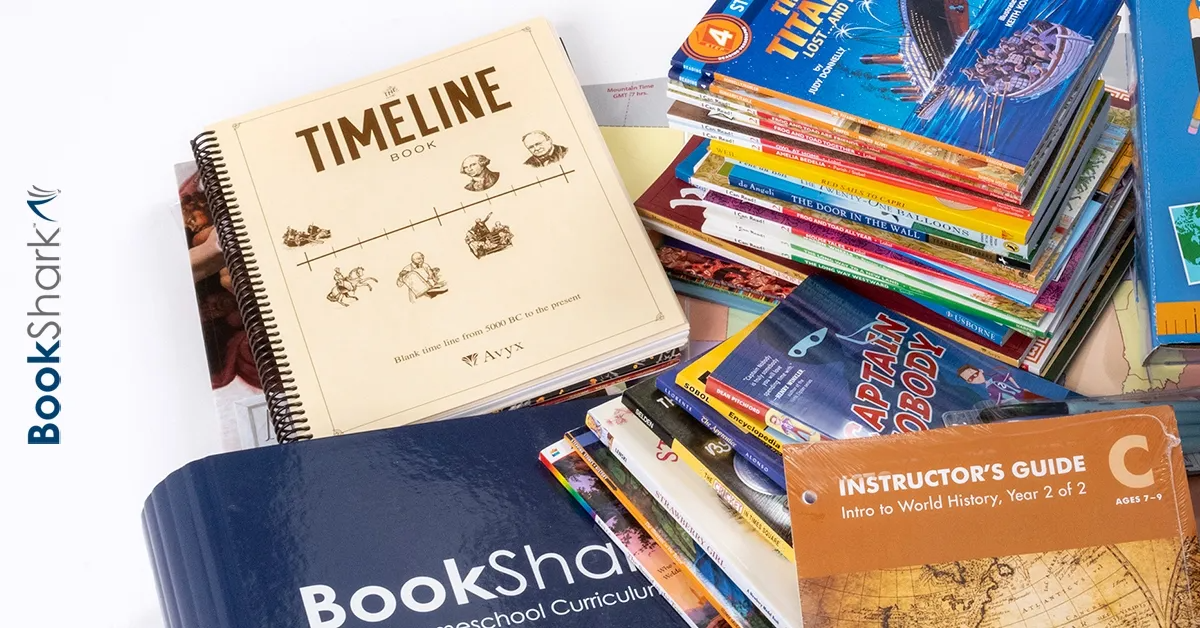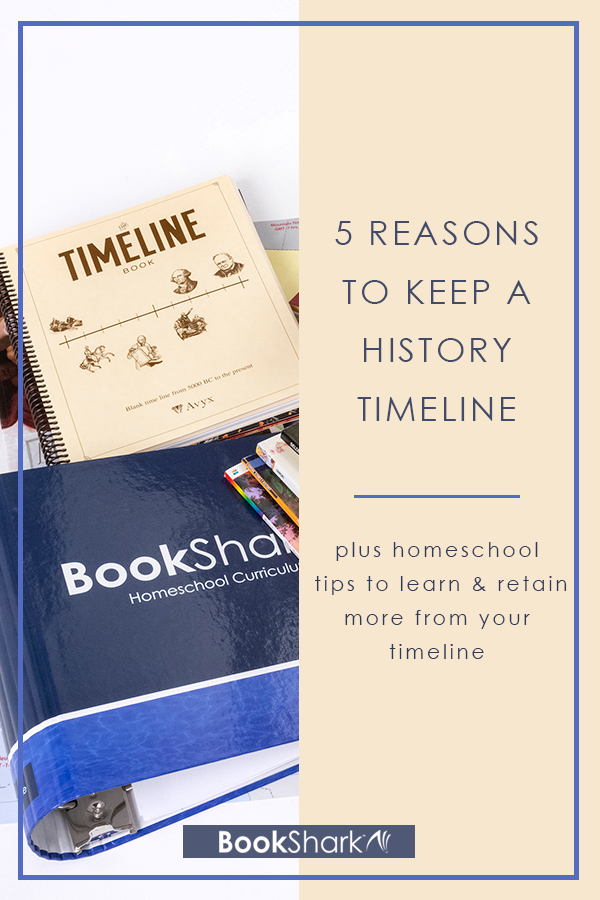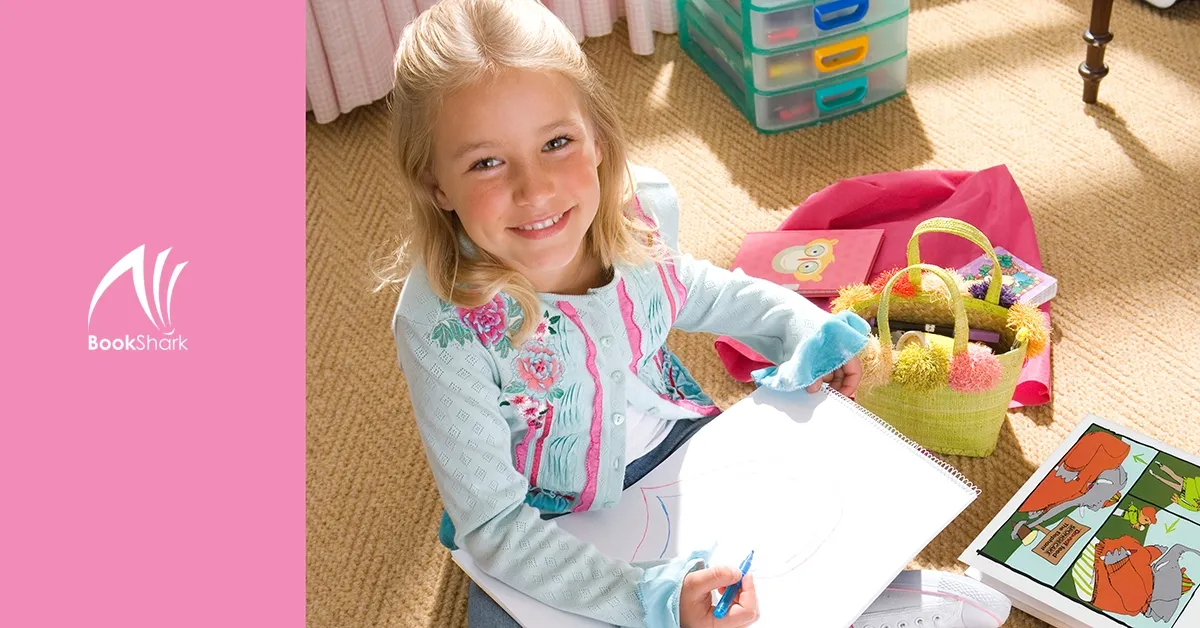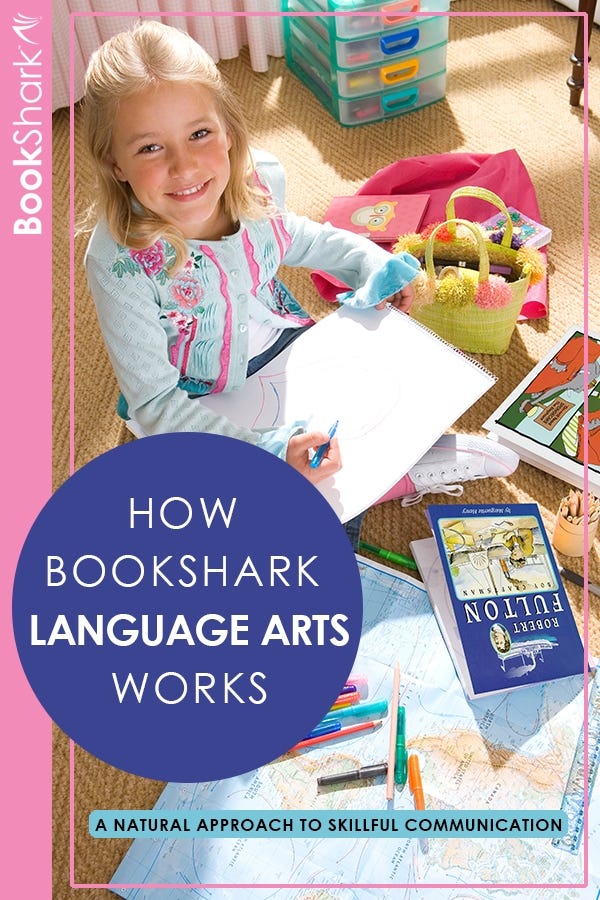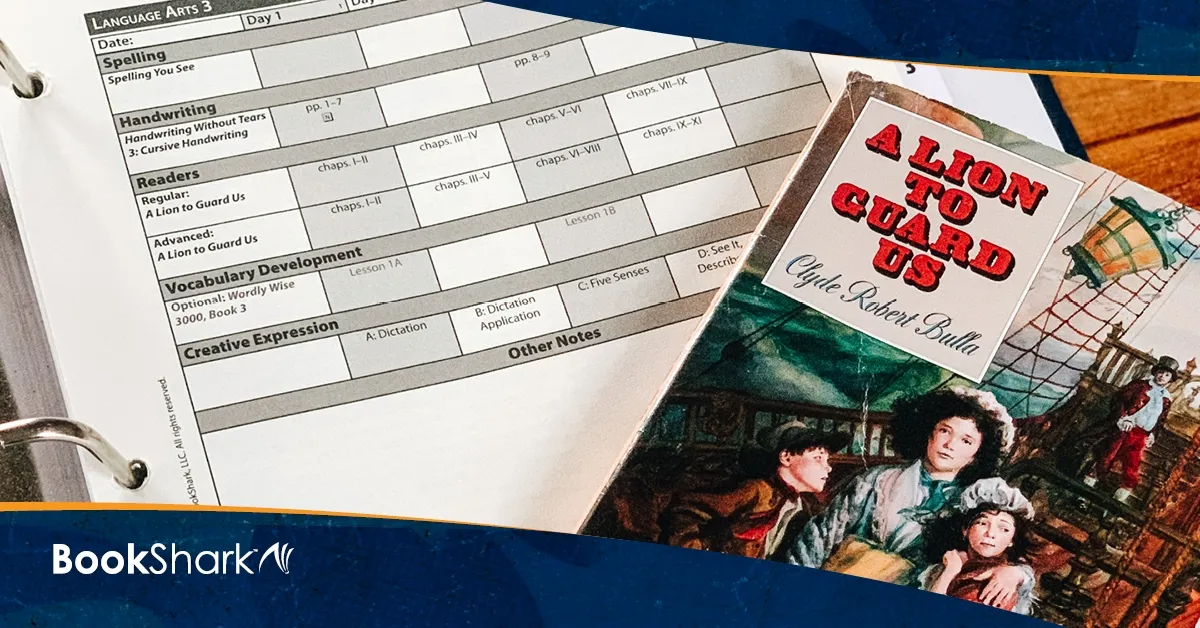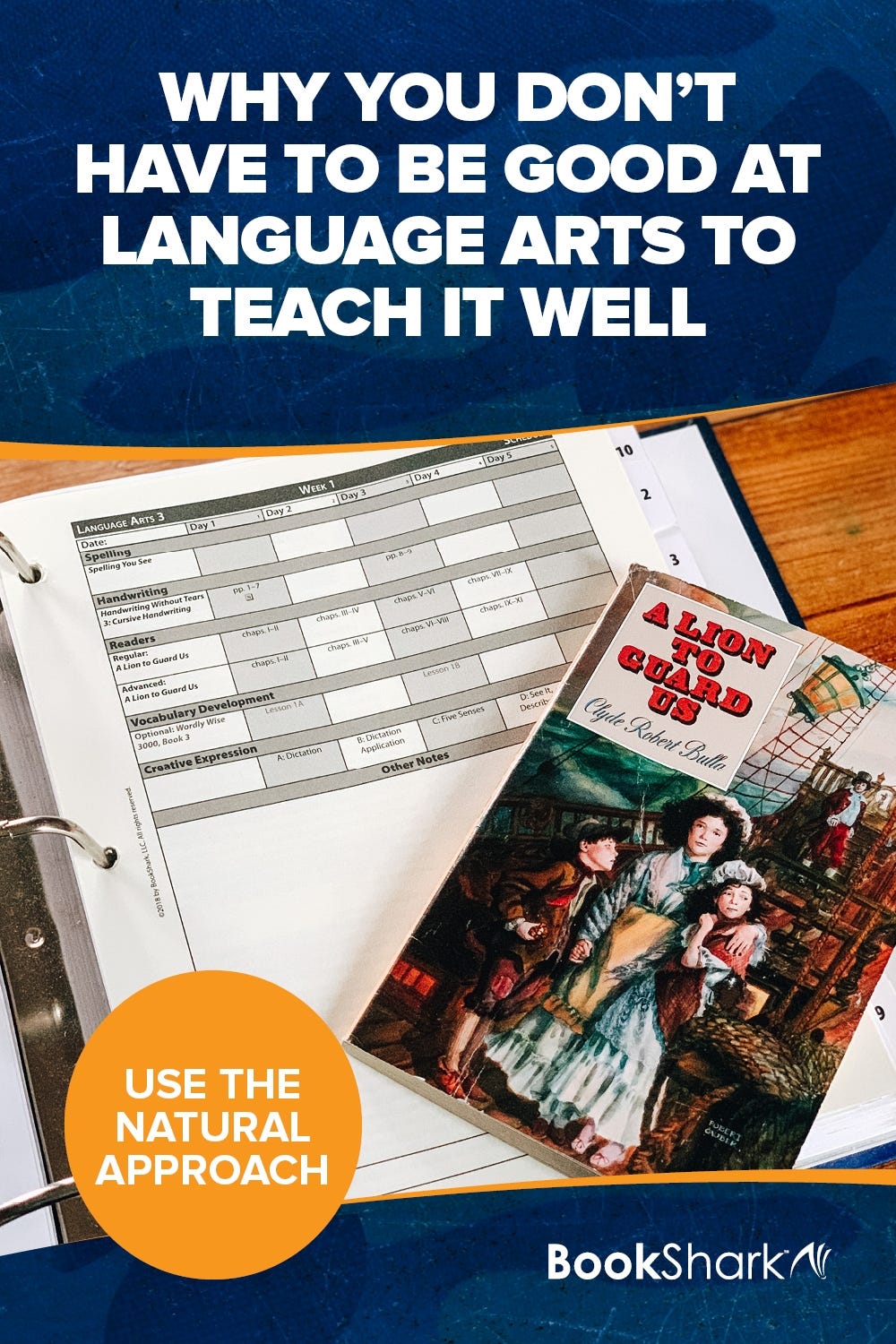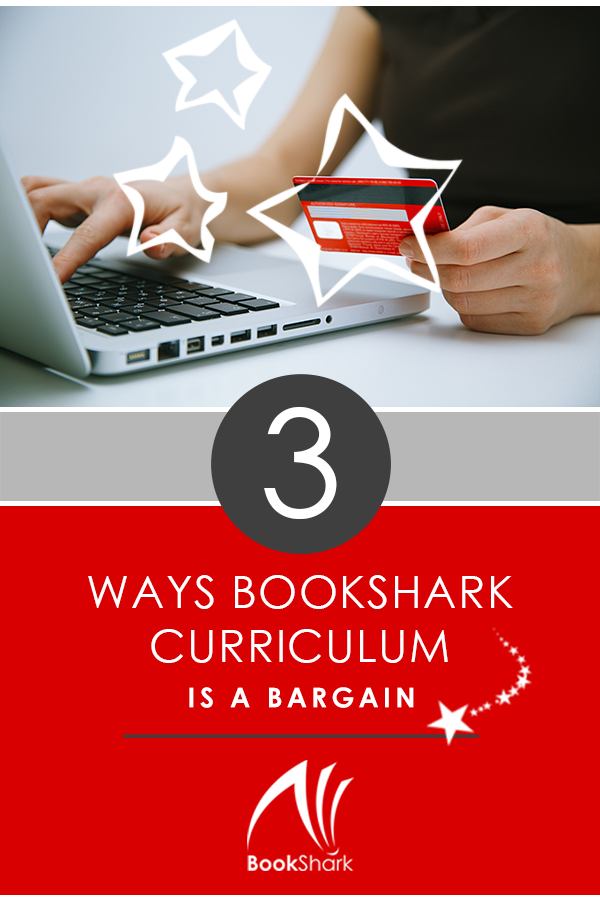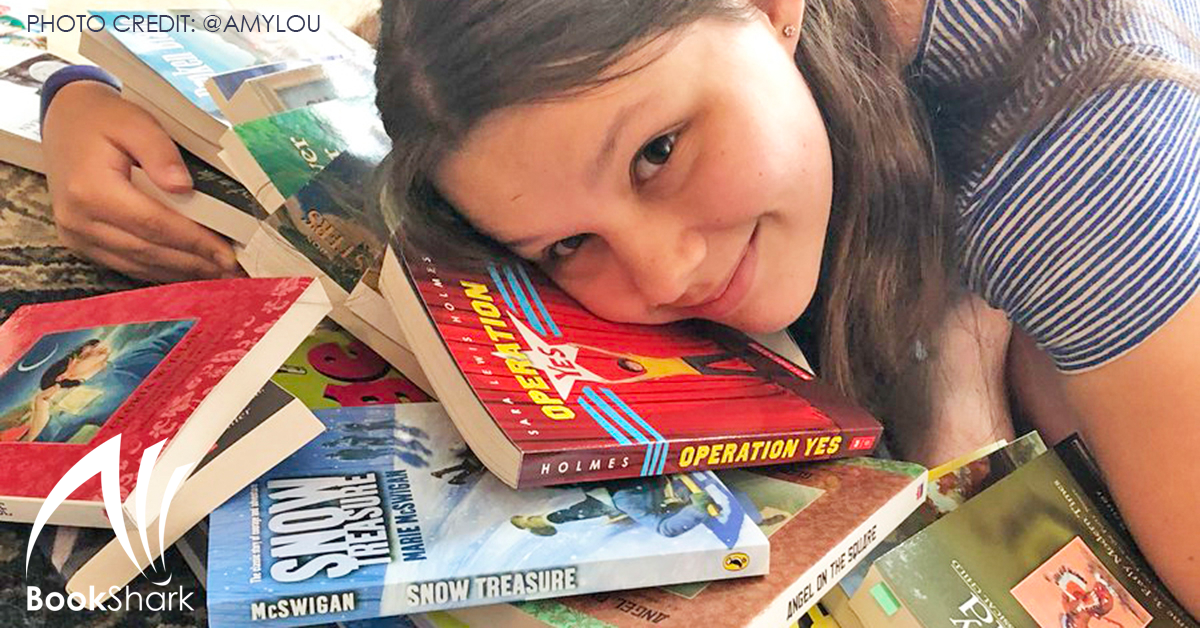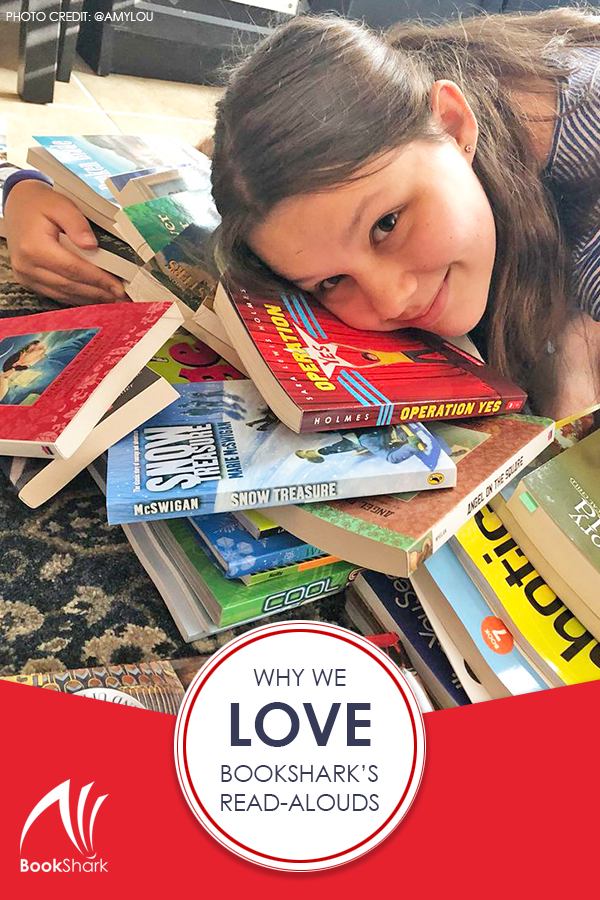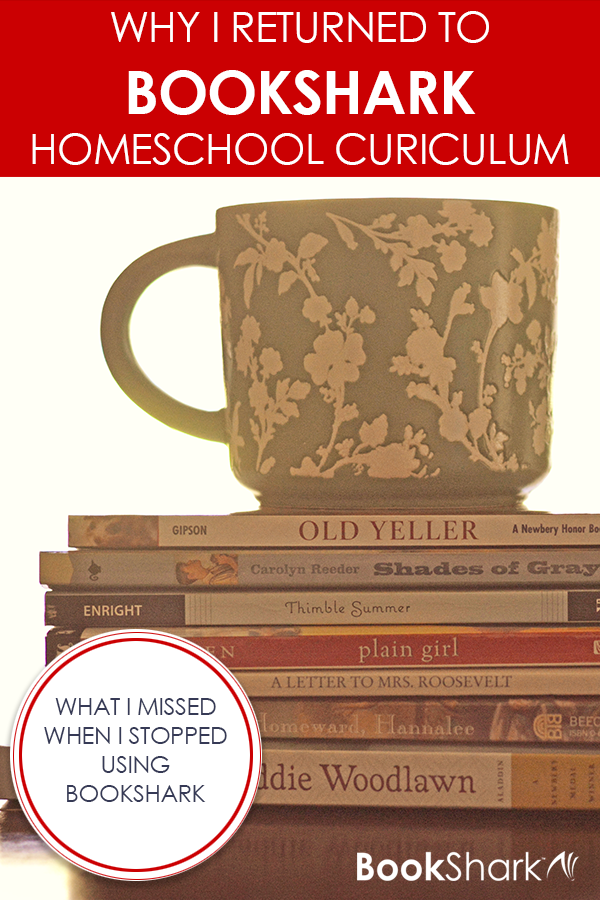Homeschooling in Michigan? Or wanting to homeschool in Michigan? Find out how you can get a FREE literature-based curriculum with support and online assessments! Join Janna Koch, BookShark’s Community Manager, as she is joined by Jen Myers and Gwyn Domke, from Michigan BookShark Virtual with Alpena schools in Michigan. Find out the benefits of using Michigan BookShark Virtual with Alpena and the option of getting it at no cost to you!
Listen to this podcast episode
Subscribe
Podcast Transcript
Janna (00:00): Welcome to Homeschool Your Way. I’m your host Janna Cook and BookShark’s community manager. Today’s episode focuses on homeschooling with confidence. My guest, Jen Myers, and Gwyn Domke are from Michigan BookShark Virtual. Jen and Gwyn are immersed in homeschooling both personally and professionally. Not only have they homeschooled their own children now facilitate homeschooling for numerous families across the state of Michigan. Their program has equipped parents to homeschool confidently and successfully. Let’s hear how. Jen, Gwyn, welcome.
Jen (00:38): Thanks, Janna, for having us today.
Gwyn (00:40): Thanks, Janna, for hosting us today on the show.
Janna (00:43): I’m excited to hear how your personal experiences have led you to your partnership with Michigan BookShark Virtual.
Jen (00:53): Yes, thanks, Janna. So my career is in education and I did homeschool my kids, but I also stepped into the role as director of our partnership here in the area in northeastern Michigan. And we service families who homeschool and we offer electives, but we also offer core curriculum like BookShark Michigan Virtual. And so when we first started our journey working with homeschool families, we realized that there was a real need for homeschool families that were looking for assistance with the curriculum.
(01:26) And so we did some research and we discovered BookShark. So we loved that there was a set of books that this family got as well as the virtual component. And as we did more research, we realized this was going to be a great fit for our families. So we started offering BookShark Virtual within our in-house program and we saw how successful that was. And so we decided we would launch it statewide and offer Michigan BookShark Virtual, which is pretty cool because now any homeschool family with a student in grades K through eighth grade who reside in the state of Michigan can actually sign up with our program and receive for free the whole box of BookShark Materials as well as access to the online program. So that is how I got into Michigan BookShark Virtual.
Gwyn (02:16): So my side of things is coming alongside Jen when we started the program and looking at Michigan BookShark Virtual, the opportunity is I homeschooled my kids for 16 years using the curriculum. So for me, it was just a natural fit to help families use this amazing curriculum because I know it works. And I was very excited to be able to share it with our local community and then to take it statewide is amazing.
Janna (02:46): And you mentioned this virtual component to BookShark, and it may sound possibly misleading because typically virtual schooling means that you are on the computer and you are doing everything in front of a screen. How is this program different?
Jen (03:04): Yes, that’s an important delineation that you’ve just made. So traditional online programs are indeed a hundred percent online. Matter of fact, in our very first year offering virtual classes through our partnership, we utilized traditional virtual programs where the student is a hundred percent online, and our families didn’t like it. They didn’t like that their kids, especially the younger kids, but really at any age, they just did not like how much time their kids sat in front of the screen. Plus they really lost that personal, intimate experience that our homeschool families were looking for. And that is indeed what birthed our search, there’s got to be something out there, something where it can still fit the confines and requirements of a virtual program that the state requires for schools, but also be something that works organically in that learning environment with mom, dad, or whoever is leading that homeschooling at home.
(04:02) And that is where we started looking at different options and we met a Book Shark representative and they started to explain how the beauty of this program and the uniqueness of it is yes, you still have all of those hands-on materials. You actually get a physical book to open up and sit on the couch and read with your child. You actually get a workbook to fill in, or you do hands-on experiments, and then the online part is really only about 25% of the time and that’s where you go to upload your answers, to upload the responses that you’ve already talked about. So it’s really a great blend and for sure more developmentally appropriate for those younger kids especially.
(04:41) So you’re right, it’s a great way to look at and explain how the virtual component in your curriculum is a traditional one.
Gwyn (04:51): The other benefit of BookShark is that students within certain ages can be grouped together. So for mom homeschooling, and I know from my personal experience I had four children and I could have them in two separate cores, but I had two kids in each history and science core and then they each have their individualized math, individualized language arts. But it took the pressure off of me having four separate history social studies, and four separate science levels to teach. So that is so unique and amazing with BookShark, and it’s one of the things I love sharing with families.
Jen (05:29): And the third thing I’d like to mention that’s unique about the virtual component of this curriculum is the online graders. So with a traditional online program, your online grader might be somewhere in a different state and really not have a pulse on what your expectations are or your autonomy as a parent with this online curriculum. Whereas our online graders work personally with our program so they understand the nuances of this curriculum and they understand our families. They understand where these families are coming from and each student gets individualized responses, which is very unique in the online platform. So that’s another huge delineation between BookShark virtual and traditional virtual.
Gwyn (06:16): And within our program, we also have mentors who are assigned to a family. So you have that middleman, so to speak, that’s coming alongside of you if you have those daily questions or any situation that you just want to discuss with your mentor, and then they can take it back to the BookShark teacher or if there’s something else that they’re having difficulty with or a book or a question, anything. They’re not going alone. They have someone alongside of them.
Janna (06:46): So what I hear you say is, if I’m a parent new to homeschooling, I might feel as though I don’t even know where I would begin. And so this program not only offers me a teacher to connect with, but a mentor to come alongside me, and then a curriculum that is fully planned so I don’t have to do any of the legwork if I want to homeschool my child.
Jen (07:08): Yes, that’s the beauty of it. As a matter of fact, truly right from moment one, you have someone coming alongside. Gwyn, as our bookshop coordinator, meets individually with each family prior to ordering any material. So she really can hone in on what that best fit will be, not only for each individual child but collectively as a family. So right from the beginning, you have assistance even to decide what level is your best fit, not to mention what other materials your family may need.
(07:42) And so it really helps because some families, when they start using BookShark, they’re not really sure where they want to start, which math curriculum they want to choose, do they want to bring the level up a little bit, or bring the level down a little bit? There are all these nuances about the curriculum that Gwyn is able to come alongside each family individually to really get that best-fit level.
(08:05) And so right from the beginning they have that assistance not to mention then once the material comes in, they have the assistance as far as how to navigate the IG, which is like the teacher’s manual, what to do with the materials, how to report the LMS. That’s the beauty of it is that at every step, they have assistance with those components, so they never really feel like they’re alone. They may be several hours away from where we are, but they always feel connected.
Janna (08:31): I think connections is one of the things that people who even start to contemplate homeschooling really get … Personally. I got a little anxious because I thought, I’m not classically trained. I don’t know what to look for necessarily in a curriculum. And then one of the biggest things we find in advising families with BookShark is that it’s not that easy if you don’t understand the nuances, Jen like you said, to pick a level or to combine children. To the company, we think it’s easy because we’re in it all the time 24/7, but for somebody who’s being introduced to it, it can become very overwhelming. And when I first heard about Books Shark through my co-op, I remember parents saying, “Oh, be careful there. There’s a lot of work and you really got to know what you’re doing.” But then when I got into it and saw how well it was laid out, step-by-step processes. It’s simple but not easy, I think is a great way to describe it.
Jen (09:29): Yes, and also one of the things that we’ve heard from the families is they like that the online graders can grade at the grade level expectation, so it really takes that pressure off of the family, especially when it comes to writing or subjective grading. It takes the pressure off of the parent to have to know where they should be at that grade level. As I said, for writing, that’s a good example where it helps them to have this online grader that can give the grade and subject-specific feedback, which parents really appreciate. And that also is part of the Michigan BookShark virtual component is they have that connection with their online grader for that feedback, which is pretty immediate. Some of the questions are auto-graded so they know right then when they submit it, and then for the ones that aren’t auto-graded, the responses are within days of the answer being submitted. So it’s nice. It’s not like a way of weeks and weeks to get a response from their online teacher.
(10:32): The other thing that our families really like about that is that the IG, the teacher’s manual, has all of the answers in it. So as a parent is working with a child, they’re not on their own trying to play the guessing game of what is this question asking. They can see the answer right there, which really helps. Any parent that has worked with their child with homeschooling, sometimes you do run into those questions that you’re not really sure exactly what they’re asking, and that’s a nice thing is by seeing the answer, not that you’re going to give your child the answer, but it does help to direct the discussion so that you can lead them to understand where the curriculum is trying to take them with that higher-order thinking question.
(11:09): And so that’s something that our parents really appreciate about the virtual side, is even though it’s online, you still have that printed IG with those answers right there, and it does help guide the discussion.one of my favorite things about being a parent, really, is being able to walk with my children through these hard things in life, and then seeing, okay, we don’t have all the answers.
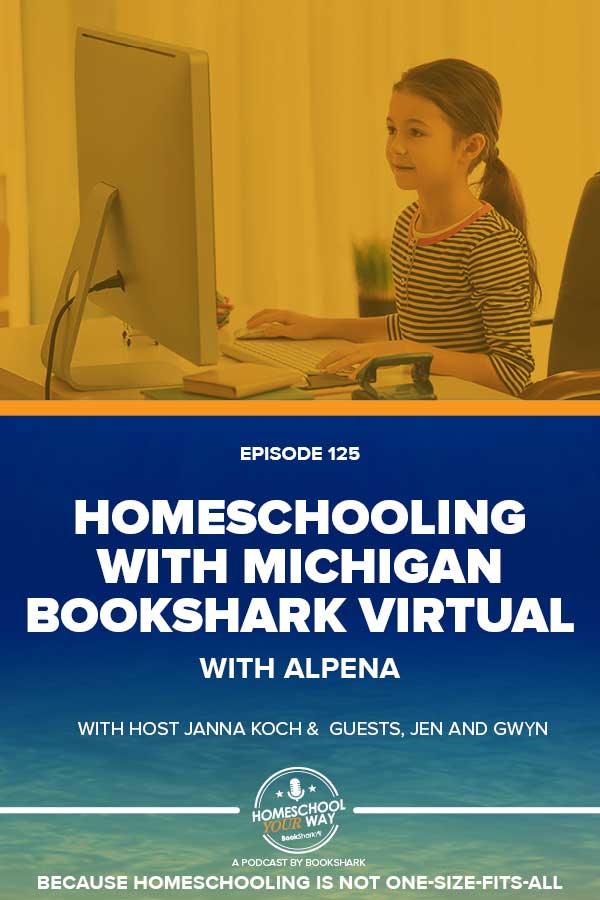
Gwyn (11:20): Another benefit of BookShark is it is a four-day curriculum. So families absolutely love the fact that it’s four days of focus and then they have one day left in the week for enrichment or other purposes for their families. That offers so much more flexibility. Especially like some of our families homeschool in different ways. It can work for so many different families. Some work full-time, and some students are with grandma or another guardian or someone, and this curriculum offers them the opportunity they can take that with them and grandma or whoever is helping them coming alongside a tutor, whoever it is, and help them complete that.
Janna (12:08): I think flexibility is a really important point to mention because if you’re new again to this idea of taking this education and bringing it home, or you’ve been homeschooling, but you’re kind of branching out to these other programs that are available to families. If you think that it is a Monday through Friday, 8:00 AM to 3:00 PM type of program, that will disqualify many parents who are working during those hours.
Gwyn (12:35): And when you have other younger children at home, it gives you those moments to be able to put that little one down for a nap and do some of your readers together. And just the flexibility of when dad comes home at night or whoever comes home at night can do some of the work with the students. You can travel. We have families that take this curriculum on the road. They’ve been to Europe, they’ve been to Mexico. All over. So it has so many benefits to it that I think you’d be hard-pressed to not find a situation in which you can’t make BookShark work for you.
Janna (13:18): And in Michigan Books Shark Virtual specifically, are the recommended hours the same as it is for the traditional BookShark curriculum? So for let’s say a certain level, we say that it’s typically three to four hours of student work per day. Does that change at all within your program?
Gwyn (13:38): I think it depends on the family and how much of the enrichment that they participate in. You can do what’s required, especially in those years when you have a lot of littles, or if you have the dynamics of, I have some families who are homeschooling one or two children and they want every single thing that’s offered.
(13:59): And so yes, you can fill your day, but you also have that opportunity to scale back when you need to. So it would ebb and flow. It’s one of those questions that’s very different for every family.
Jen (14:14): What I would say is I don’t feel like Michigan BookShark Virtual, adding the virtual component would add time. If anything, it would add options. With traditional BookShark, as amazing as it is, you are limited to just the hands-on materials that you have, which is awesome. The nice thing about the virtual component is you have the same hands-on materials, but you also have the virtual component so that if you do need your child to be a little bit more independent, by the time they get to the older grades, you can say, “Okay, while I do this, you are going to work on this.” And that’s when they can do the virtual aspects, or as Gwyn said, you can do all of the extra stuff hands-on and then still have them upload their answers to the virtual, but it really hasn’t added time. It just adds an option that you have the flexibility to add independence for your student, especially as they get older. So if anything, I would say it adds opportunity, not time.
Janna (15:22): Well, I really like that distinction because as a homeschool mom who is down to one and she is working very independently, there’s actually very little that I do with her now working through Level I as she’s 13 then when we first started seven years ago and she was still learning how to read. So this idea that as they do age, if you are looking for more independence, it will give it. And if that’s not what you’re looking for, it certainly doesn’t have to be the focus with Michigan BookShark Virtual.
(15:53): So if I’m considering putting my child into Michigan BookShark Virtual, I would love to have the assurance that if I choose to put my child back into a brick and mortar after any time, either a year or two years later, that they are going to be tracking with their peers. So how does your program come alongside parents to give them the assurance that they’re doing enough?
Jen (16:23): Yes. Well, that is a very common question that all homeschool parents have am I doing enough? Am I at the right level? Have I covered what they’ll need? Whether you’re going to put them in school or not, homeschool families have that questions. That’s a nice thing that you can utilize with Michigan BookShark Virtual is that they’ve done that legwork for you. They’ve taken these levels, they’ve compared it to grade level expectations that Michigan has, and they’ve made sure that that material covers most of those standards so that when you hit a level in a certain grade you know that when they’ve completed that level, they’ve covered the topics and the benchmarks that are hit in the state standards for that subject, for that grade level, which is really, really a relief for homeschool parents because they don’t have to have the guesswork of how much do I do? What do I do, what do I cover? It’s all right there.
(17:29): Not only is it all right there, but by using Michigan BookShark Virtual progressively through the elementary grades and into junior high, you’re getting a really great caption of all the different subjects, all the great literature. It’s a wonderful journey of learning that those kids go through and coming from an educator comparing it to what, as I’ve seen in the classrooms that I’ve taught, the literature is high quality and the volume of literature is a lot more literature than what you would see traditionally, which all of us know the best way to make a great reader is to read. And so that is something that really is a cornerstone to this curriculum is the amount of reading that the child does as well as the read allows that the adults do with the children. What a great way for them to develop and understand how a story is put together and to study the topics of science and history as they’re tied in with stories. It makes it so much more real for them.
(18:35): Then to be able to have the practical hands-on aspects like laying it out right on the timeline. What a great way to understand how an event fits into history. You’re reading about it in every book that you read. Michigan Bookshop Virtual has the student not only identifying where in the timeline that event happens but also mapping it to where it is with geography, it makes it so much more real for the kids. It’s more meaningful than what I remember history being. And so that’s a really nice aspect of that.
(19:09): So not only are the standards taken care of and covered that the state would require, but Michigan BookShark Virtual goes even further and takes those standards and gives them application opportunities, which is really great to see incorporated in a virtual platform.
Gwyn (19:27):: So another way that you could meet some students’ needs with the curriculum is I had an auditory learner. So for him, he struggled with the readers on his own because he spent so much time trying to comprehend that I did audiobooks for him, and he’d follow along in his reader, and then he could grasp the comprehension and answer those questions effectively. So I love the fact that BookShark uses phenomenal literature. You can find an audiobook, they can listen, they can glean from history, and they can really engage and learn and grow, even for a struggling student.
Janna (20:13):: And even if there isn’t an audiobook available, it just because it’s stated as an independent reader for the student if you know your student and you need to read that to your student as they read aloud, that is one of the reasons we homeschool is so that we can speed up or slow down or make adaptions for our children. When I started homeschooling my own girls, I didn’t even realize that one of them was a struggling reader, because she compensated so well. And then when we started to go through all the literature, she wasn’t keeping up with the pace like her twin sister. And then I started to realize, oh, she’s struggling with words even though she was understanding concepts. And so just a few years of homeschooling with BookShark, she was off the charts and totally caught up and surpassed her peers. But I wouldn’t have known. How would I have known had I not been homeschooled with her?
(21:08): All right, ladies, you have me sold on this program. If I were to live in Michigan and I was contemplating that I wanted to homeschool and I know that this is the right choice for me, what would be my next practical steps as a parent who’s interested in Michigan BookShark Virtual?
Gwyn (21:27): So you would reach out to me through my email, which I think you will have that at the end of this podcast included. Tell me you’re interested. I will contact you and discuss how you will enroll with our district for the year using this free virtual online component. We will ship a box of curriculum to you directly and come alongside you and help you set up your year.
(21:57): Also students within our district are issued Chromebooks that they will check out and will be shipped. I’ll ship them to the family and they can use those to submit their work, which is another great benefit. And that would be your first couple of steps in getting set up with us here.
Jen (22:22): Then in that meeting with Gwyn, she would sit down with you once you’ve decided that this is a good fit for your family and she would discuss which level is the best fit, whether are you able to combine kids and how that works.
(22:35): We offer this for students in grades kindergarten through eighth grade, and we are able to combine kids who are close in grade level. So that is a nice thing. Usually, how that works is they combine-
Gwyn (22:49): Within a couple of grade levels.
Jen (22:52): And then they do their separate math and language arts, typically.
Gwyn (22:56): Yes. So three math programs that we offer are Saxon, Singapore, and Math UC. So families can look at those three. I do have an email that I send, and I send the links and information about all those curriculums so they can choose the best fit. We have an organic conversation about the dynamics of their student, what type of learner they are, and what approach they’re looking at.
Jen (23:22): The nice thing too is there are some pre-assessments that she sends links to that they’re able to do with their child, and then those pre-assessments give a great picture of what level would be the best fit.
(23:35) So they kind of use both the results of the pre-assessments as well as this conversation that they have to figure out what would be the best. And then from there, once they’ve decided on the level, Gwyn puts the order in, we order it, we take care of the paperwork enrollment on that, and really then everything is taken care of. Then it’s a matter of the box arriving at your house sometime later in August, and we share a calendar with the family. And like Gwyn had mentioned, it’s a four-day program. So each week they have four days of work to complete for that week, and it’s laid right out in 32 weeks. Starts at the beginning of September, goes through the middle of May, and they submit their weekly work and then at the end of the week that is all submitted, and then their mentor contacts them if they have any concerns or any questions that they need help with, and otherwise it just runs through the year.
(24:30): So it’s a pretty smooth process. It’s the enrollment, it’s receiving the materials, familiarizing yourself with the materials and the books, working through your school year, and then at the end of the school year, you’re able to keep that box of materials if you choose. If you’ve completed the whole year, you can keep that box of materials and then sign your children up for the next level if you choose to do the next year. So it’s a pretty easy process. And then we come alongside, we have Gwyn as well as our online graders that come alongside them throughout the year and pretty much weekly communication with things that they may need help with, reminders of different things that they’re doing.
(25:14): It’s a smooth-running machine. We’ve done this now for a few years and our families really, really appreciate it. It’s something that not only is the financial help to them, but really they feel like it’s an emotional help for them because they’re not out on their own. They may be in an area in Michigan where they don’t get to be with other homeschool families, and this gives them an opportunity to really rub shoulders with someone else. Oftentimes, I’ll hear Gwyn, have conversations with family where she can help them through the transition of homeschooling.
Janna (25:51): All right, I am thoroughly convinced that this is an amazing program that I want to be a part of if I were a resident of Michigan. You had mentioned that the district would send me a Chromebook for any student I sign up with through this program. What other things would I need in my home to make this successful homeschool?
Gwyn (26:12): One of the most important things for a virtual program is to have internet that is adequate for uploading because you are required to upload work each week. And if a student doesn’t have those capabilities because you’re so remote and your service is very slow, like dial-up, it’s just not going to be, unfortunately, a good fit for you. And Michigan BookShark Virtual won’t be available for you, unfortunately. Besides that, your basic school supplies, pens and pencils, and markers. That’s just a typical thing you’re going to need for your school supplies. Other than that, books are provided, the virtual component is there, and you have your teachers on this side, your mentor, and support.
Janna (27:07): In closing, what are your final words for families who are contemplating coming to Michigan BookShark Virtual?
Jen (27:16): Jenna, really what I would say is take a look online, look up Michigan BookShark Virtual, do some research, take a look at what they offer, look at the all subject packages, drool over the amazing literature that a kid can read in one year, which is pretty amazing. And then contact Gwyn. Start a conversation. You’re not committing to anything by just having a conversation. Reach out, and see if it’s a fit for your family. Dig a little bit and do some research. And at the end of the day, if you feel like this is something you like to try for your family, you’re not out anything because again, this curriculum is free.
(27:55): So I would just encourage families to do a little research, make a contact, ask the questions, and find out if it’s a good fit for them. And if so, we are here to support you.
Gwyn (28:08): I’ve homeschooled four children that are very different learning styles with BookShark. So for me personally, to have those conversations, I think it would be hard-pressed for a family to bring something to me that I wouldn’t know how to direct them and help them come up with the best solution for their children’s education for that year.
Janna (28:30): I know that if there are people who are listening who had any doubt in their mind that they could not homeschool successfully and confidently after listening to this podcast, they will now know that with the support of Michigan BookShark Virtual, they have all that they need to do this and do it really well.
(28:50): Ladies, thank you so much for coming on today. Thank you for sharing your expertise, and thank you for providing a program for the state of Michigan.
Jen (28:59): Thanks, Janna.
Gwyn (29:00): Thanks, Janna.
You can contact Gwyn at [email protected]

